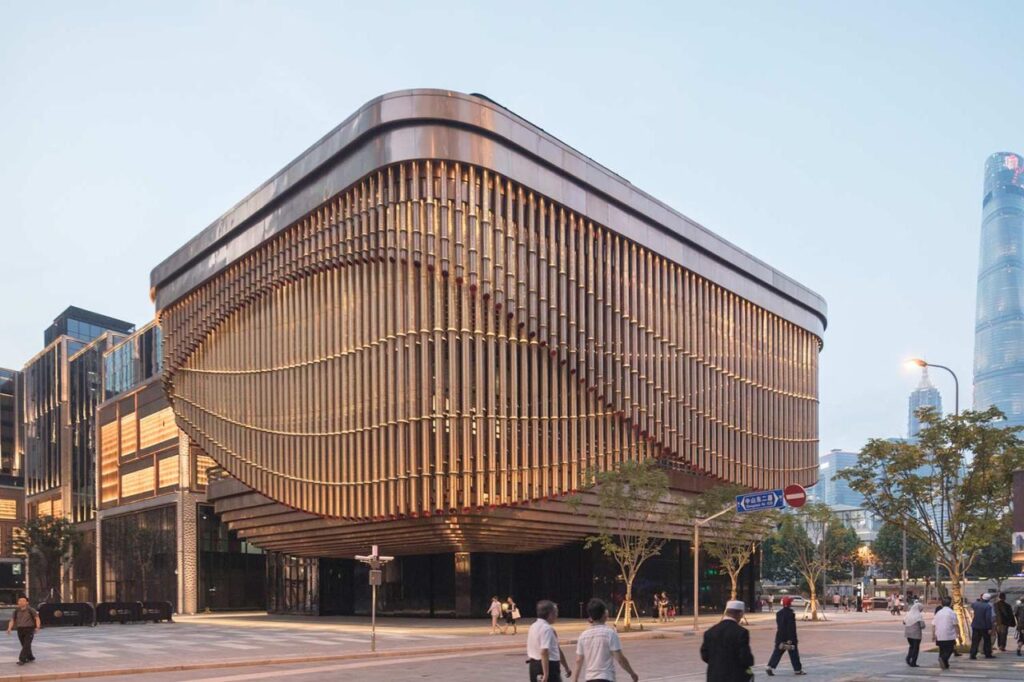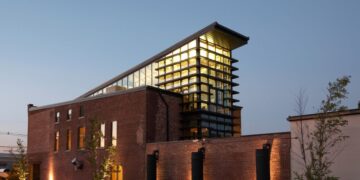In the world of architecture and design, a quiet but profound revolution is underway. For centuries, the design process has been an iterative journey from sketch to model, from blueprint to physical structure. However, the rise of parametric design is fundamentally changing this workflow. Parametric design is not a style but a methodology that uses algorithms and computational logic to generate complex forms and structures. Instead of drawing a fixed object, a designer defines a set of parameters and relationships—a set of rules—and the computer generates the final design. This allows for a level of complexity, customization, and optimization that was previously unimaginable. This article will provide a deep dive into the core concepts, innovative tools, and transformative applications of parametric design, demonstrating how it is reshaping the future of architectural and product design, creating a world where form and function are in perfect computational harmony.
The Foundational Principles of Parametric Design

At its heart, parametric design is based on the idea of defining a design through a series of variables and a logical framework. This approach moves away from the static, fixed geometry of traditional CAD (Computer-Aided Design) to a dynamic, flexible system.
A. Parameters and Variables: The process begins with the identification of key parameters. These are the variables that the designer can control. In a building design, these might include a building’s height, width, the size of its windows, the angle of its roof, or the materials used. By changing a single parameter, the entire design can be altered.
B. Algorithmic Relationships: The real power of parametric design lies in the relationships defined between these parameters. The designer creates a set of rules, or an algorithm, that dictates how these variables interact with each other. For example, a rule might state that the size of a window is a function of the amount of solar exposure it receives, or that the density of a façade pattern is proportional to the level of sound it needs to block.
C. Dynamic and Responsive Models: The result is a dynamic model that responds to changes in the parameters. If a designer changes the building’s height, the windows and other components automatically resize and reposition themselves based on the pre-defined rules. This allows for rapid iteration and exploration of a vast number of design options, enabling designers to find the optimal solution for a given set of constraints.
D. Performance-Driven Design: Because the design is tied to a set of rules, it can be optimized for specific performance goals. The algorithm can be programmed to find the most energy-efficient shape, the most structurally sound configuration, or the most cost-effective material usage. This is a radical departure from traditional design, where performance analysis is often an afterthought.
The Key Tools and Technologies
The practice of parametric design is enabled by a number of powerful software tools and platforms that provide a visual, node-based interface for building the algorithms.
A. Visual Programming Languages: Tools like Grasshopper (for Rhino) and Dynamo (for Revit) have been instrumental in democratizing parametric design. These visual programming languages allow designers to create complex algorithms by connecting a series of “nodes” without writing a single line of code. Each node represents a specific function, and by linking them together, designers can build sophisticated design logic.
B. Building Information Modeling (BIM): Parametric design integrates seamlessly with BIM software. When a parametric model is created, it automatically generates a rich dataset of information about the building’s components, including their size, material, and cost. This allows for a more efficient and accurate workflow, from initial design to final construction documentation.
C. Computational Analysis and Simulation: Parametric models can be linked to powerful analysis and simulation tools. A designer can use a script to test how a building’s form affects its wind load, its daylighting, or its thermal performance. This allows for a continuous feedback loop between design and analysis, ensuring that the final structure is not only beautiful but also high-performing.
Transformative Applications Across Design Disciplines

Parametric design is being used to create some of the most innovative and complex structures in the world, from intricate building facades to futuristic products.
A. Complex Architectural Facades: One of the most common applications of parametric design is in the creation of complex, non-standard building facades. Architects can use a parametric model to design a façade with a constantly changing pattern that responds to solar exposure, providing a dynamic and energy-efficient skin for the building. A great example is the undulating, honeycomb-like facade of the Beijing National Aquatics Center, which was designed using parametric tools.
B. Structural Optimization: Parametric design can be used to optimize a building’s structural system, finding the most efficient way to distribute loads and use materials. This can lead to a reduction in material usage, lower construction costs, and a more sustainable final product. It is particularly useful for designing complex, non-linear structures.
C. Customized and Mass-Customized Products: The principles of parametric design can be applied to product design, allowing for mass customization. A company can define a parametric model for a chair or a car part, and customers can customize it by changing a series of variables. The model then generates a unique design that is ready for manufacturing.
D. Urban Planning and Master Planning: On a larger scale, parametric design is being used in urban planning to explore different city layouts and their impact on factors like traffic flow, pedestrian movement, and public space usage. This allows planners to test and optimize different urban strategies before they are implemented.
Addressing the Challenges and the Future Outlook
While the potential of parametric design is immense, there are still a number of challenges that must be addressed for it to be fully adopted by the industry.
A. The Learning Curve: Parametric software can be complex, and there is a steep learning curve for designers who are new to the methodology. Education and training are critical for a wider adoption of the tools.
B. The Balance of Art and Logic: There is a risk that an overreliance on algorithms could lead to a soulless, purely functional architecture. The key is to find the right balance between the cold logic of the computer and the creative, empathetic vision of the human architect.
C. Integration with Construction: While parametric design is excellent for creating a design, a key challenge is ensuring that the complex, non-standard geometry can be easily and affordably constructed. The rise of robotics and 3D printing in construction is helping to bridge this gap.
D. The Future of Parametric Design: The future of parametric design is deeply intertwined with the future of AI and robotics. We will see AI-powered generative design tools that are even more intuitive and powerful, allowing designers to create buildings that are more responsive, more sustainable, and more deeply integrated with their environment. Parametric design will also play a key role in the circular economy, as it allows architects to easily track and manage the materials used in a building, ensuring they can be reused at the end of its life.
Conclusion
Parametric design is not just a passing trend; it is a fundamental shift in the way we think about design and creativity. It is a powerful methodology that empowers architects to move beyond the limitations of traditional drafting and explore a world of unprecedented complexity, efficiency, and innovation. By defining design through a set of rules and variables, we are creating a more dynamic and responsive built environment.
The long-term impact of parametric design will be immense. It will lead to buildings that are more energy-efficient, more structurally sound, and more thoughtfully integrated with their surroundings. It will also democratize design, making it possible for a wider range of people to participate in the creative process. The collaboration between human and artificial intelligence is poised to usher in a new golden age of architecture, where our buildings are as beautiful as they are intelligent. It’s a testament to the idea that the most innovative and powerful solutions often lie not in the hands of a single master designer but in a synergistic partnership between human vision and computational power.











